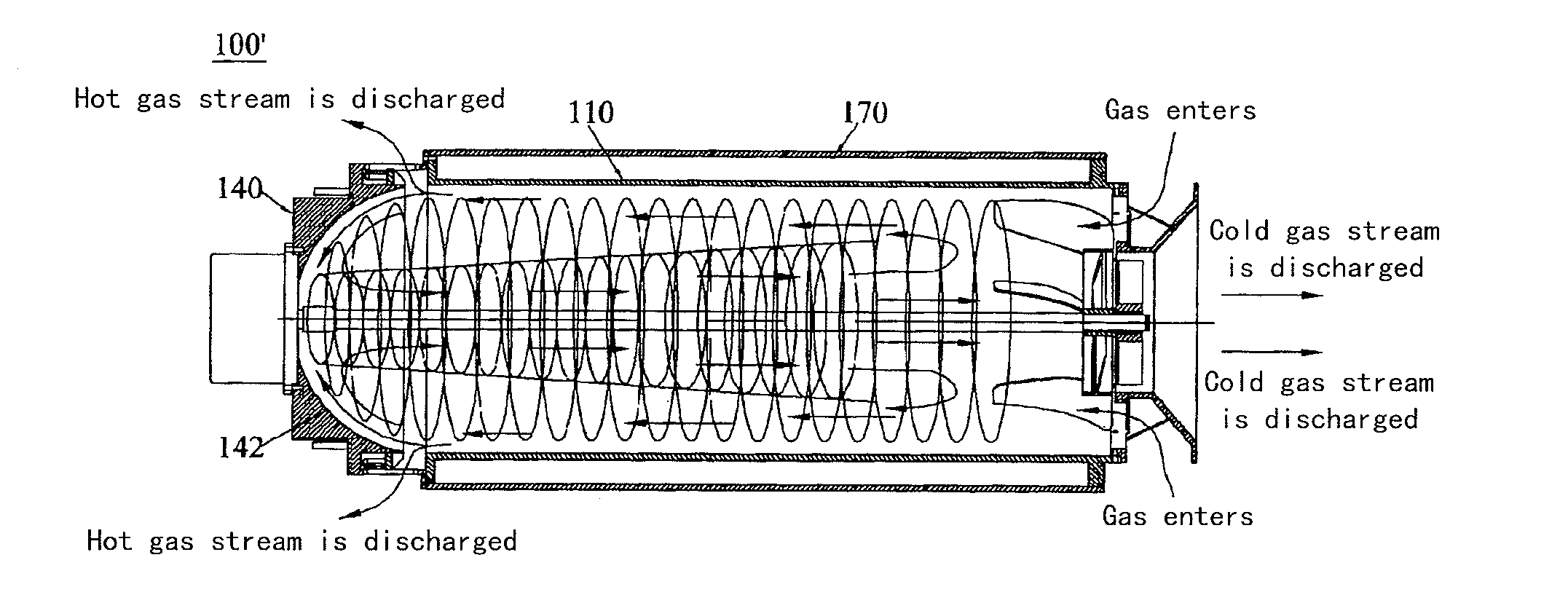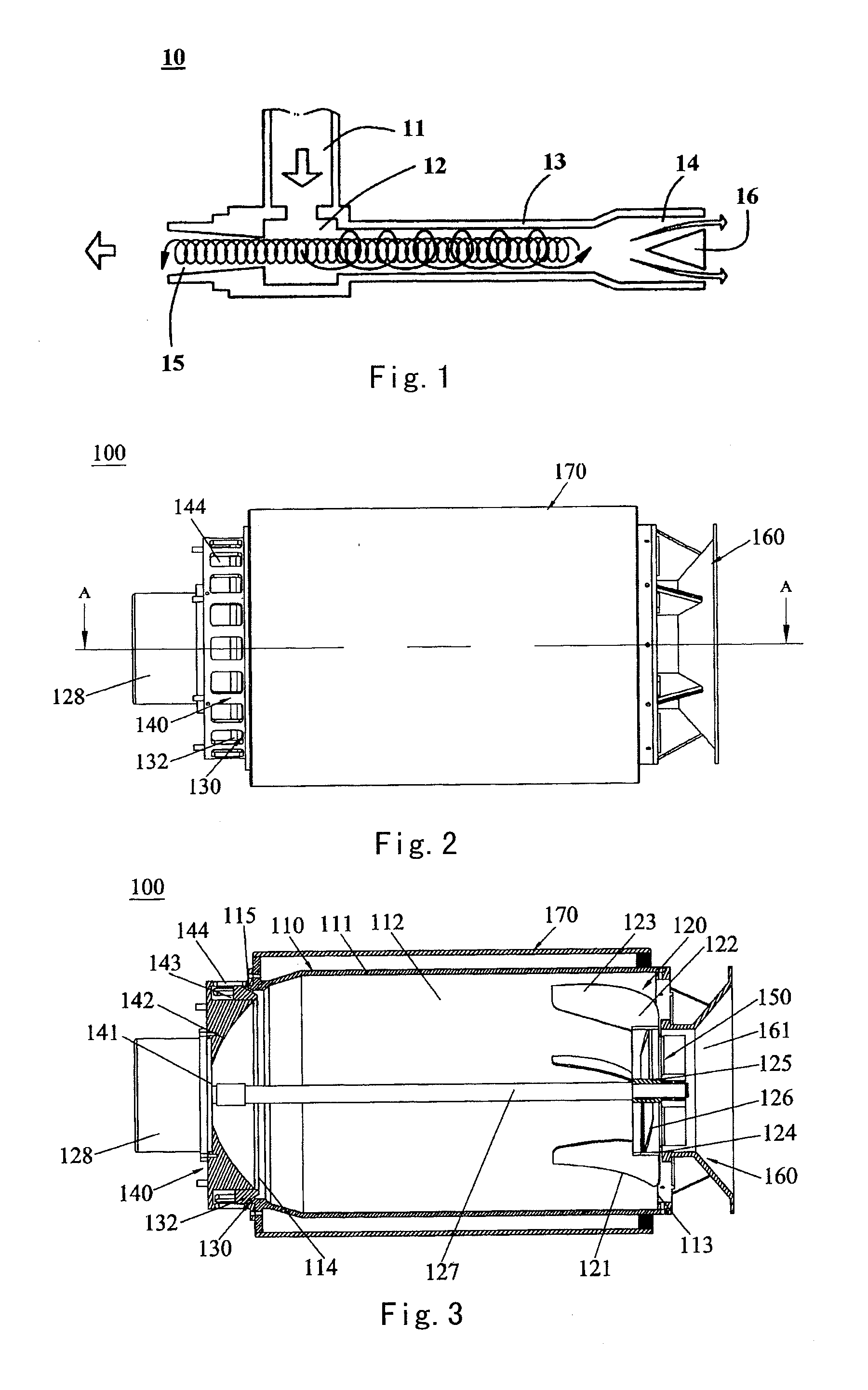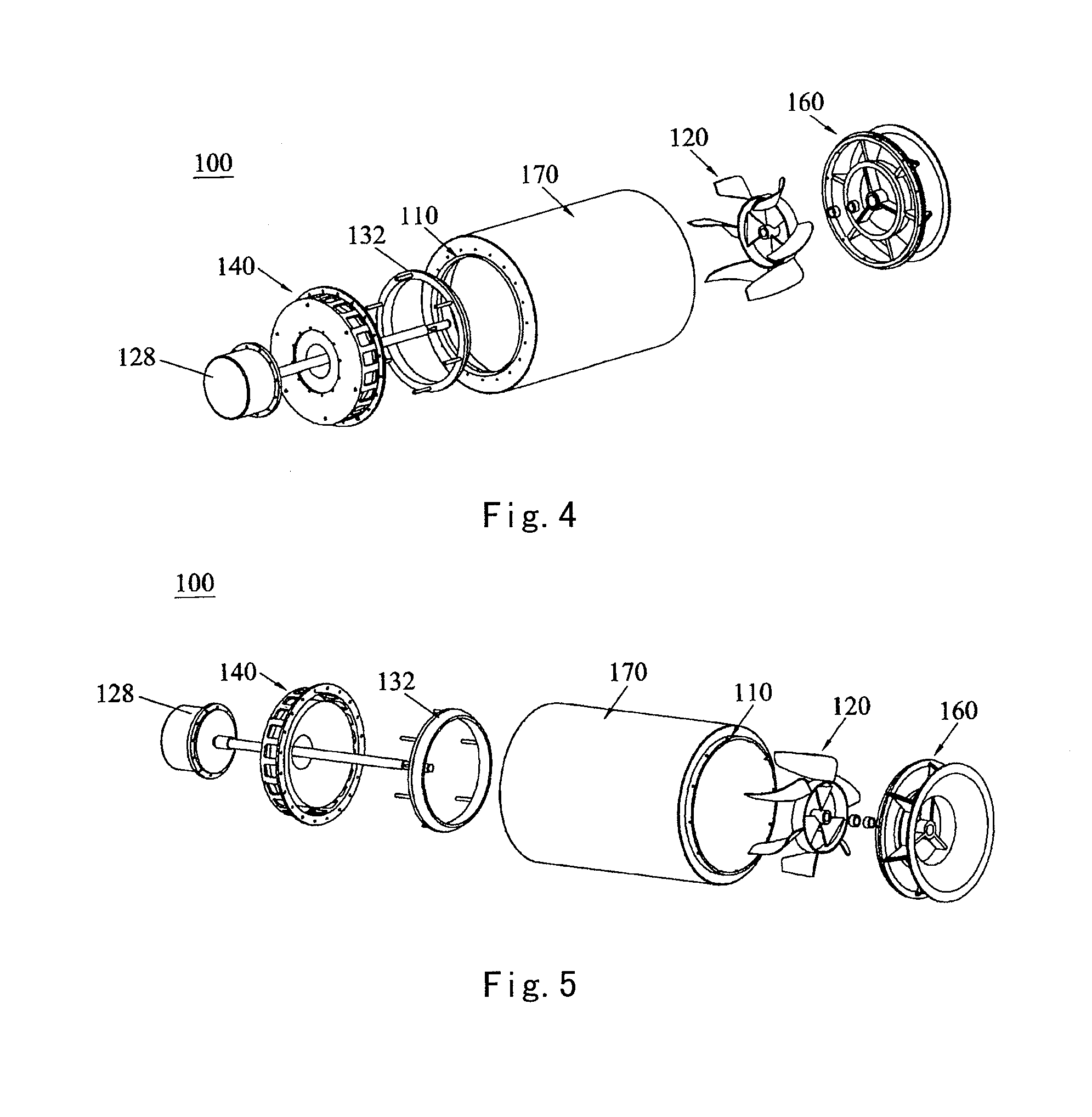Vortex device for separating cold gas and hot gas
- Summary
- Abstract
- Description
- Claims
- Application Information
AI Technical Summary
Benefits of technology
Problems solved by technology
Method used
Image
Examples
first embodiment
[0110]As shown in FIGS. 2-7, when considered from operation mechanism, the vortex type cold and hot gas separating device 100 according to the present invention comprises: a body 110, an intake and agitation fan device 120, a hot gas stream discharge port 130, a vortex return device 140, and a cold gas stream discharge port 150.
[0111]The body 110 has a cylindrical inner wall surface 111 defining a cylindrical inner chamber 112. The cylindrical inner chamber 112 has a first end 113 and a second end 114 opposite to the first end in an axial direction of the cylindrical inner chamber.
[0112]The intake and agitation fan device 120 is attached to the body 110 at the first end 113 of the cylindrical inner chamber 112, and is disposed to suck external gas into the cylindrical inner chamber 112 and agitate the external gas to form a first vortex rotating along the cylindrical inner wall surface 111 and traveling towards the second end 114 of the cylindrical inner chamber 112.
[0113]The hot ga...
second embodiment
[0125]FIGS. 8-11 show schematic views of a vortex type cold and hot gas separating device 200 according to the present invention.
[0126]As shown in FIGS. 8-11, the vortex type cold and hot gas separating device 200 according to the second embodiment of the present invention also comprises a body 110, an intake and agitation fan device 120, a hot gas stream discharge port 130, a vortex return device 140, and a cold gas stream discharge port 150.
[0127]A main difference between the second embodiment and the first embodiment shown in FIGS. 2-7 is that the intake and agitation fan device 120 comprises an intake fan 210 and an agitation fan 220 which are separate from each other in the vortex type cold and hot gas separating device 200 according to the second embodiment of the present invention. The intake fan 210 comprises a plurality of intake blades 211 which are disposed to be adapted to suck external gas into the cylindrical inner chamber 112. The agitation fan 220 comprises a plurali...
third embodiment
[0137]FIGS. 12-14 show schematic views of a vortex type cold and hot gas separating device 300 according to the present invention.
[0138]As shown in FIGS. 12-14, the vortex type cold and hot gas separating device 300 according to the third embodiment of the present invention comprises: a body 110, a fan 310 (not shown in FIG. 12, referring to FIG. 13 or 15) disposed outside the body, an gas inlet 320 disposed in the body 110, a hot gas stream discharge port 130, a vortex return device 140, and a cold gas stream discharge central tubular mount 330 with a cold gas stream discharge passage. The fan 310 used in the present invention is preferably a high-speed fan, and a velocity of gas stream stably outputted by the high-speed fan can reach Mach 1 / 8 or more, for example specifically may be Mach 1 / 7, Mach 1 / 6, Mach 1 / 5, Mach 1 / 4, Mach 1 / 3, Mach 1 / 2, 1 / 2, Mach 2 / 3, Mach 3 / 4, Mach 4 / 5, Mach 5 / 6, Mach 6 / 7, Mach 7 / 8, even may approach Mach 9 / 10 (the so-called sonic barrier critical value), an...
PUM
| Property | Measurement | Unit |
|---|---|---|
| Temperature | aaaaa | aaaaa |
| Pressure | aaaaa | aaaaa |
| Flow rate | aaaaa | aaaaa |
Abstract
Description
Claims
Application Information
 Login to View More
Login to View More - R&D
- Intellectual Property
- Life Sciences
- Materials
- Tech Scout
- Unparalleled Data Quality
- Higher Quality Content
- 60% Fewer Hallucinations
Browse by: Latest US Patents, China's latest patents, Technical Efficacy Thesaurus, Application Domain, Technology Topic, Popular Technical Reports.
© 2025 PatSnap. All rights reserved.Legal|Privacy policy|Modern Slavery Act Transparency Statement|Sitemap|About US| Contact US: help@patsnap.com



